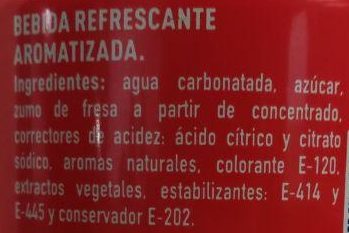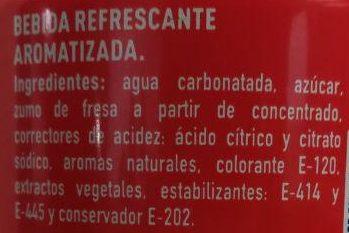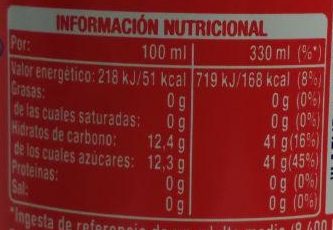Fresa - Fanta - 330 ml
Aquesta pàgina del producte no està completa. Podeu ajudar a completar-la editant-la i afegint-hi més dades a partir de les fotos ja disponibles, o fent-ne més amb l'aplicació de androide o iPhone / iPad. Gràcies!
×
Codi de barres: 5449000061164 (EAN / EAN-13)
Nom comú: Bebida refrescante aromatizada sabor Fresa
Quantitat: 330 ml
Empaquetament: en:Metal, en:Recyclable Metals, Alumini, en:Can
Marques: Fanta
Categories: Aliments i begudes amb base vegetal, Begudes, Begudes amb base vegetal, Begudes carbonatades, Begudes amb base de fruites, Refrescs, en:Fruit sodas
Països on es va vendre: Espanya
Matching with your preferences
Entorn
Empaquetament
Transport
Report a problem
Fonts de dades
Producte afegit per openfoodfacts-contributors
Última modificació de la pàgina del producte per packbot.
La pàgina del producte, també editada per jog13ovd, jujuyeh, kiliweb, thaialagata, yuka.WGZzaklxc0V1dGdqcC9GZ293S0k1OEp4d2NLYlgwbW5BYmM4SUE9PQ.










